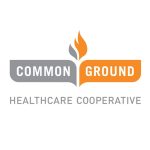
County Health Rankings & Roadmaps takes new approach to rankings

County Health Rankings & Roadmaps, an initiative of the University of Wisconsin Population Health Institute that’s supported by the Robert Wood Johnson Foundation, is taking a new approach to evaluating counties.
The program has replaced its method of ranking the health of counties in a state with a “sharper tool” that allows for comparisons with counties outside of a state, according to a recent update.
“Compared to the ordinal ranking approach, this new method more accurately reflects similarities and differences between counties,” the project noted. “Counties experiencing similar conditions can then explore ways to combat inequities together so that everyone has opportunities and resources to live long and live well.”
The project released a separate report highlighting the connection between civic participation and health.
The nation’s healthiest counties have “well-resourced civic infrastructure,” with residents having more accessible information through local news outlets, broadband access and public libraries compared to counties that are among the least healthy, the report noted. People in counties with higher rates of civic participation, like voting or union membership, tend to live longer.
Under-resourced areas are often in parts of the country that “bear a legacy burden of various forms of disinvestment and structural racism” and often have barriers that limit civic participation, like laws that create obstacles to voting, according to the report.
Pursuing broadband expansion, supporting public libraries, pushing voter registration, backing voter turnout efforts and forming unions can all lead to increased civic participation.
“Assuring everyone has a say in shaping these conditions is key,” Sheri Johnson, principal investigator for the project and director of the UW Population Health Institute, said in a statement. “History shows that when historically excluded groups build power, meaningful changes can happen that benefit the health and well-being of all.”
See the project’s update of Wisconsin data.
This article first appeared in the Wisconsin Health News daily email newsletter. Sign up for your free trial here.





